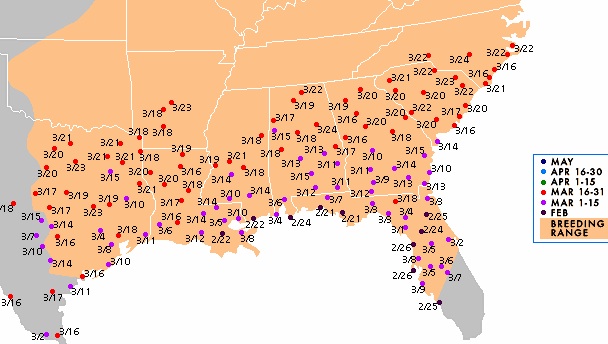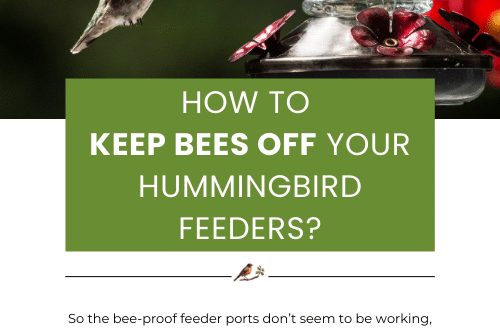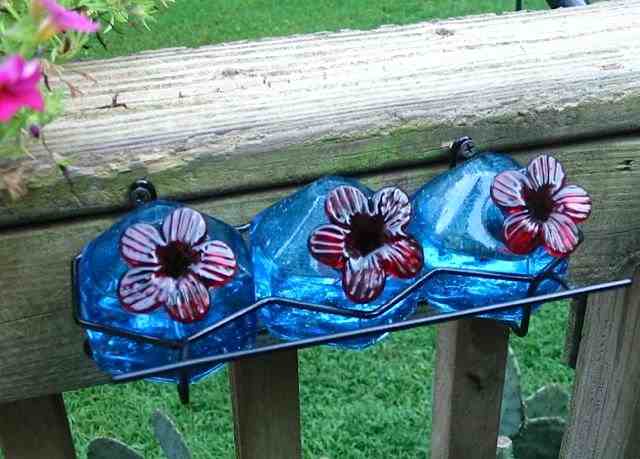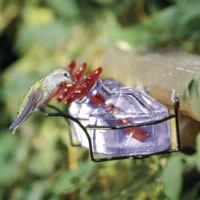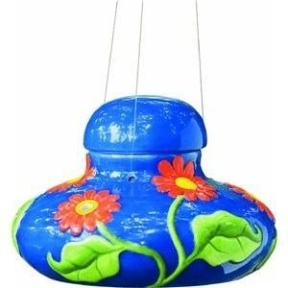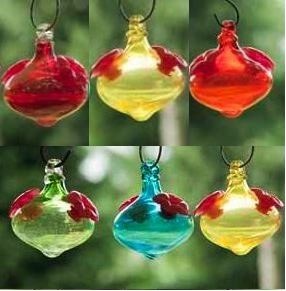-
Time to Dig Out that Window Hummingbird Feeder
It was actually snowing today, after 3 days of spring-like 70 degree temperatures, on March 25 there were flurries in Atlanta! Will winter ever end? Migratory birds are already arriving, making their way northward from the gulf. It’s got to be a trying journey as the landscape lacks their usual finds. They’re already hungry, tired and now… there’s no food!
Feeders help them on their way; seed feeders, suet feeders, fruit feeders, even your window hummingbird feeder. The same tiny sprites are likely to return to your yard if it offered good digs last season. It’s called site fidelity and hummingbirds practice this ritual.
The map over at hummingbirds.net shows daily sightings and locations for Ruby-Throated Hummingbirds. They’re penetrating the southeast and moving into Kentucky now. Just because it’s still cold outside it doesn’t prevent Mother Nature’s instincts from kicking into full swing! Longer daylight hours are pushing birds north to spring breeding grounds.
.. despite cold weather.
Although it may not seem like hummingbird season is here – it is! Definitely time to dig out those feeders for a good cleaning and get them filled. Nectar can even be mixed a bit stronger than usual during migrations.
Your hummingbird feeder will prove to be a most welcome sight for the hungry and tired little birds. And hey, if you’re lucky enough they may even just stick around your place for the breeding season!
-
Hummingbird Feeder Sans the Ant Moat
The busy hummingbird season’s winding down, and all of a sudden you’ve got ants who’ve discovered the nectar… yuck! Hummingbirds won’t drink (or prefer not to) from feeders with ants or bees, or any insects in their nectar – just doesn’t taste too good. If buying an ant moat this late in the season isn’t so appealing to you, there’s an easy way to get around the pests in your nectar!
Vaseline! Yes a dab of petroleum jelly around the hanger will thwart ant’s passage. If your feeder hangs in direct sunlight (which really isn’t the best location) just try to be sure that if the gooey stuff melts-it doesn’t enter the feeder’s ports. As the one in charge of six hummingbird feeders at the stables, an even better alternative was discovered this year.
It’s called Swat, and it’s purpose is to keep flies and gnats off horses’ wounds, out of their ears, or away from their eyes. There’s two kinds: original which is pink, and their newer version, which is clear, but like always… original is best due to the thicker consistency. They made it in clear because some folks don’t care for the “war paint” effect on their horse. Anyway… this stuff rocks as far as an ant moat! A dab around the hangers back in July… and it’s still working!
And the cool deck-mount feeder above? Parasol stopped making it for this reason… ants and no way to use a moat. The Flower Box is still around (in lavender and green too) and the same principle applies with the Vaseline application. A dab around the hangers and back of the basket keeps this hummingbird feeder ant-free… sans the moat.
-
More eating and less fighting with Bird Brain hummingbird feeders
Their migration south will soon begin as will the “crazies”! Mobs of them, buzzing, fighting, darting around feeders to stake their claim. Tiny bodies need lots of energy for the trek back to winter breeding grounds in Central and South America, and it’s big attitude when it come to fueling up for the trip. Territorial would be an understatement, the sprites can become pretty fierce and downright possessed around feeders!
It’s been a weird season for hummingbirds, many folks report fewer numbers upon their initial arrival, the extended winter weather likely to blame. Fewer (almost none) of the birds’ natural nectar sources were available for their journey northward, possibly causing many to perish. It wasn’t until much later in the season we started seeing more numbers at feeders… and many of them being juveniles.
And soon again it will be time to go – the dwindling hours of daylight is what signals their clocks that it’s time. It’s a total myth that leaving feeders out will keep hummingbirds from leaving… Mother Nature tells them otherwise.
You can really make a difference in helping these flying jewels by offering as much food, and as many sources as possible. If you haven’t done so in the past, try making your own nectar before the season’s over (you’ll be glad you did). It’s really so very simple: 1 cup plain table sugar to 4 cups water… that’s it! Nothing else in the solution as it’s harmful, no red dye needed. We boil one cup of water just to dissolve the sugar more effectively – add 3 cups of cold and no waiting for it to cool. Store unused nectar in the fridge for up to two weeks. Some say the solution may be made stronger during migration as more sugar equals more fuel. Never stronger than a 1:3 ratio though.
Keep nectar fresh and consider hanging an
extra feeder or two so there’s not so much fussing and fighting. Multi-port styles are a good idea as they allow more birds to feed at once… provided they can all get along!
Most of the Bird Brain Hummingbird Feeders offer 2-3 ports and some of them are still around. In fact, they’re being manufactured again under a different name – so they must be worth it! The Mini-kins are perfect for this time of year because they come in a set of three and may be placed in separate locations. Again… less fussing and more eating will suit hummingbirds best for their long trip ahead!


